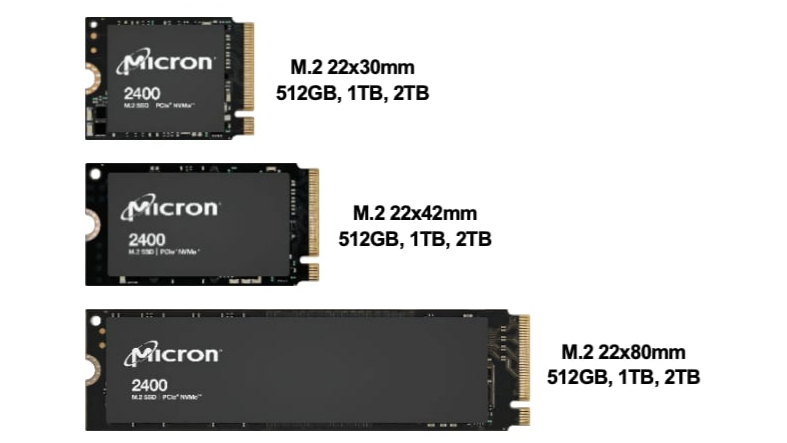Micron Ships First 176-Layer QLC SSDs: Up to 4,500 MBps Read Speeds
titleMicron Ships 176-Layer QLC SSD With Up to 4,500 MBps Read Speedsbest SSDs, and that continues today with its latest announcement in the client and data center storage markets. The company initiated volume shipments of 176-layer QLC (quad-level cell) NAND flash, which it says is an industry-first for SSDs.
176-layer MLC (multi-layer cell) was put into play by Micron in late 2020, but bringing the technology to the QLC realm should allow for higher capacity SSDs that hit lower price points. The new Micron 2400 SSD PCIe 4.0 NVMe is now shipping for client applications (i.e., value-priced desktops and laptops) to showcase this breakthrough. Micron will even offer the 2400 SSD in a tiny 22x30mm M.2 form-factor, which is the smallest available at the 2TB capacity. 22x42mm and 22x80mm form-factors are also available.

Compared to Micron's 96-layer QLC, its new 176-layer successor offers 33 percent greater I/O throughput and up to a 24 percent reduction in read latency. In the case of the 2400 SSD, it will be available in 512GB, 1TB, and 2TB capacities. As is typically the case, the highest-capacity SKU offers the best performance, with sequential reads/writes of 4,500 MBps and 4,000 MBps, respectively. Random reads/writes come in at 650K and 700K IOPS, respectively.
When it comes to endurance, Micron quotes up to 600 terabytes written (TBW) for the 2TB SKU, while the entry-level 512GB SKU gets by at 150 TBW. If that wasn't enough, Micron says that idle power consumption has been reduced by 50 percent compared to its previous generation QLC SSDs.
"Micron's 2400 SSD builds upon our 176-layer NAND industry leadership to drive the transition to QLC-based storage for the client market," said Jeremy Werner, corporate VP and GM for Micron's Storage division. "Furthering our market leadership, we expect the new 2400 PCIe Gen4 SSD will significantly accelerate the adoption of QLC in client devices as it enables broader design options and more affordable capacity."
We should emphasize that the 176-layer QLC is primarily targeted at the budget segment (as HDD replacements), and Micron will also release consumer-market SSDs using the technology. And as you can tell by performance numbers, they don't come anywhere close to matching today's fastest consumer MLC SSDs, which can top 7,000 MBps using the PCIe 4.0 interface. But performance is definitely "good enough," and the price/capacity ratio will definitely play in favor of these new 176-layer QLC SSDs.
Get Tom's Hardware's best news and in-depth reviews, straight to your inbox.

Brandon Hill is a senior editor at Tom's Hardware. He has written about PC and Mac tech since the late 1990s with bylines at AnandTech, DailyTech, and Hot Hardware. When he is not consuming copious amounts of tech news, he can be found enjoying the NC mountains or the beach with his wife and two sons.